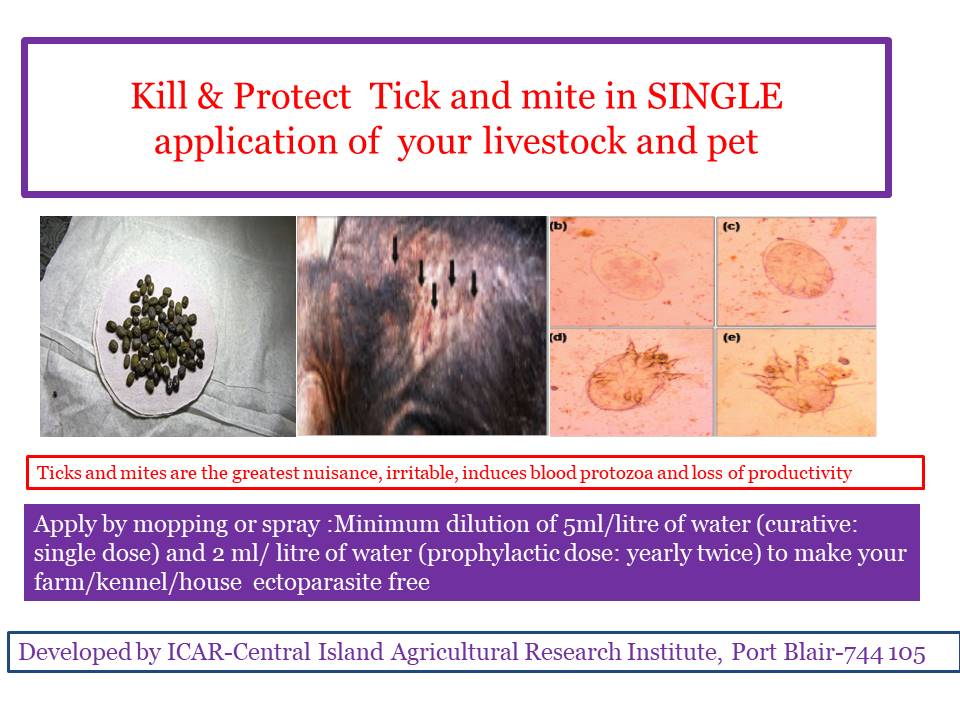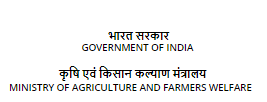Acaracide to control ectoparasites of farm and pet animals

Background:
Parasitic infections are a widespread issue and are seen as a significant barrier to the health and productivity of animals. These might result from either endoparasites, which reside inside the body, or ectoparasites, which attack the surface of the body, such as ticks, mites, flies, fleas, midges, etc. Ticks are among the most common and dangerous ectoparasites that feed on the blood of mammals, birds, and reptiles worldwide. Literature suggests that ticks affect 80% of the total livestock population. Given their capacity to spread haemoprotozoan, bacterial, and viral diseases to both humans and animals, ticks have long been recognized as having significant medical, veterinary, and economic value. Depending on criteria like life stage, host type, and tick species, hard ticks can feed on their hosts for several days to several weeks at a time. Thus, the ticks are responsible for two types of losses: (i) Direct and (ii) Indirect losses. Direct losses include a reduction in live weight and anemia among domestic animals, while tick bites also reduce the quality of hides. Apart from irritation or anemia in case of heavy infestations, ticks can cause severe dermatitis. These parasites generate direct effects on cattle in terms of milk production and reduce weight gain. Indirect losses are related to the transmission of life-threatening haemoprotozoan infections like Babesia infection (causative agent of red urine in cattle), theileriosis in cattle, canine ehrlichiosis, etc. Other indirect losses correspond to the cost of treatment for clinical cases; expenses incurred in the control of ticks; unearned income or inefficiencies in the production system: use of genetically resistant breeds to ticks but less productive; trade restrictions of animals between areas and countries. The economic losses by ticks include not only the price of animals of high genetic value, but the impossibility of these animals to contribute to the genetic improvement (productive potential) of an entire herd or even a region. Has been estimated in the recent past that, this has been estimated that Rhipicephalus microplus alone causes US$13.9–18.7 billion per year worldwide and loss per animal per year is US$ 7.3, which includes losses due to infection and its control. Mange mites are blamed for great economic losses due to the damage they cause to the skin and wool, anemia, poor body condition, and decreased milk and meat production and growth rate in livestock and canines. Flies, fleas, and midges are intermittent feeders of livestock and pet and causes continuous irritation leading to significant reduction of health and productive potential:
During recent years, under field conditions and through laboratory trials, this has been evidenced that, some of the synthetic pyrethroids and macrocyclic lactones have developed resistance. Our developed product has been found effective both against sensitive and resistant populations of ectoparasites:
Technology Details:
The formulation has wide application across various animal species like cattle, buffalo, goat, pig, camel, Mithun, and dog. Therefore, this product has huge market potential. As a result, there will be no direct and indirect losses in livestock and pet animals as well. Our preparation is unique because:
The uniqueness of our product:
1. This product has ovicidal, larvicidal, and adulticide properties.:
2. Effective against resistant tick population.:
3. Reinfection does not occur up to 180 days post-treatment.:
4. Safe to use in pregnant and lactating animals:
5. Safe to use in companion animals since the product does not contaminate the surrounding environment.:
6. The shelf life of the product is 3 years at room temperature from the date of manufacture. :


